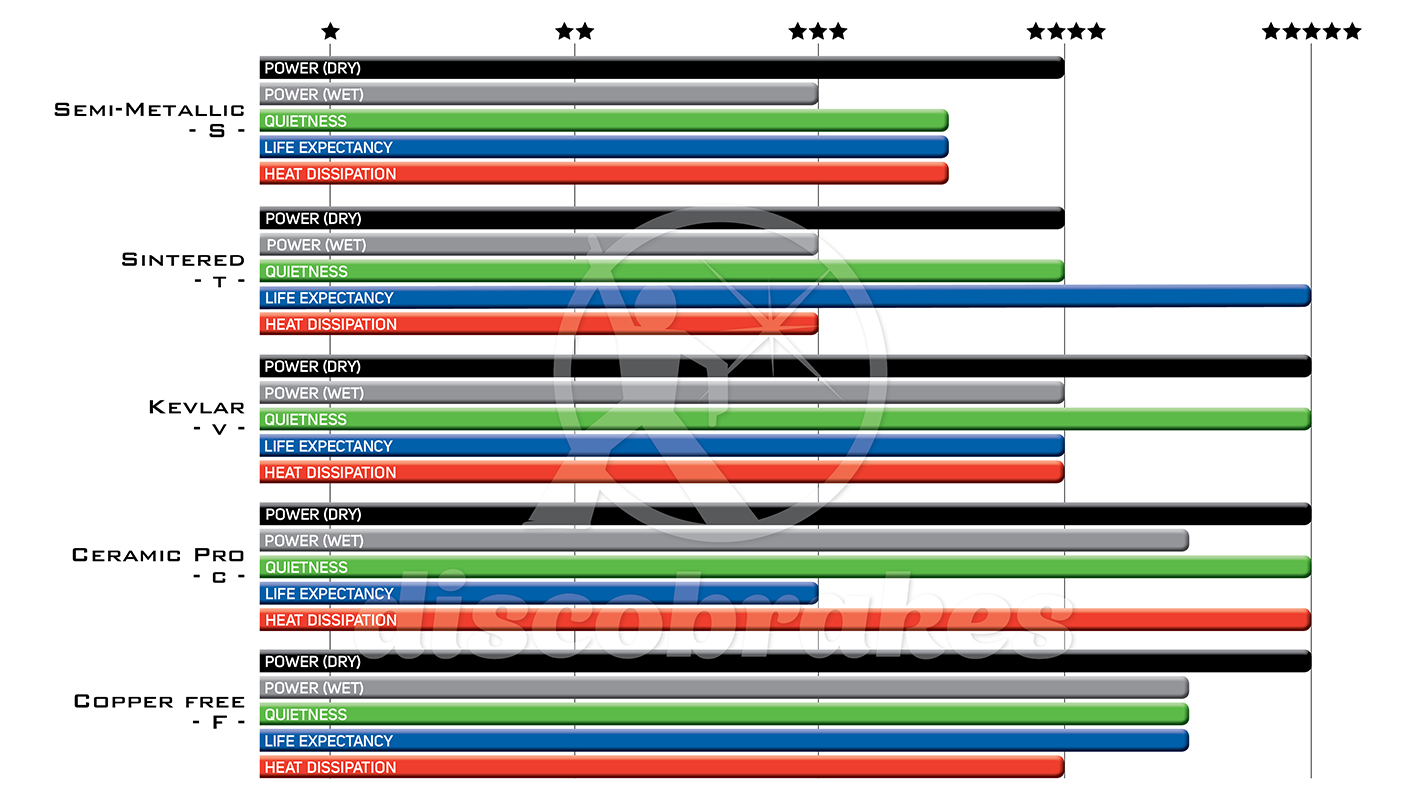|
|
|
Disc Brake Pad Compounds

Many disc brake pads are available in different compounds
Semi-Metallic Compound
Also known as Compound S (Semi-Metallic)
Semi-metallic compound for good wear in all conditions.
Medium density with consistent wet and dry performance and good grip.
Advantages: Cheap, Above average all around performance
Disadvantages: Grippier and longer lasting pads are available
Suitable For: Everything
Conclusion: Best Value
Superlight WorldCup Competition Alu Backed Pads use the medium compound.
Professional Grade Black Ceramic Compound
Also known as Compound C (Ceramic Pro)
These soft organic ceramic fiber disc brake pads are carbonized. The ceramic compound insulates the brake system from friction heat up to 400oC. The result is a very powerful, quiet pad with extremely low heat generation
which all but eliminates the chances of brake fade.
| |
Details
Upgrade on original fitted pads
DIN 79100 Standard Approved
Organic Compound contains no metal material
Reduces damage to rotor
Carbonized compound reduces brake fading
Ceramic Fiber insulates brake system from friction heat
|
Advantages: Excellent grip, Low noise, Low heat, Consistent in all conditions
Disadvantages: Short life span unless rider is light on brakes
Suitable For: DH, Dry XC, Ti Rotors
Conclusion: Best Performance, Short Life
Metallic Sintered
Also known as Compound T (Sintered)
These sintered pads offer superior power in all conditions
| |
Long wear pads, great for all types of riding
Consistent braking power in the wet
Almost unaffected by rain and snow
Copper back plate
|
Advantages: Better performing and longer lasting than most pads
Disadvantages: More expensive than medium pads
Suitable For: XC, DH (low brake use), All weather conditions, Mud
Conclusion: Solid Pads and Best All Rounders
Red Ceramic Compound - Hard
Also known as Compound D (Ceramic Hard)
Harder than ordinary pads. This is the highest density, hardest, ceramic compound for performance and longer lifetime. These organic
disc brake pads contain a high amount of ceramic fiber, which insulate the brake system from friction
heat up to 400oC.
Advantages: Better performing and longer lasting than medium pads
| |
Details
Upgrade on original fitted pads
DIN 79100 Standard Approved
Organic Compound contains no metal material
Reduces damage to rotor
Carbonized compound reduces brake fading
Ceramic Fiber insulates brake system from friction heat
|
Advantages: Longer lasting than Black Ceramic pads
Disadvantages: More expensive than Black Ceramic pads and not as grippy
Suitable For: XC, DH (low brake use)
Conclusion: Advantages of a Ceramic Pad with Longer Life
Kevlar Compound
Also known as Compound V (Kevlar)
Contains Kevlar brand fiber developed by DuPont
Kevlar is a high strength synthetic fiber which dramatically improves the performance of these medium density pads and gives excellent braking power
Advantages: Better performance than semi-metallic
Disadvantages: More expensive than semi-metallic and known to wear out faster in bad weather
Suitable For: XC, DH
Conclusion: Performance Advantages of Kevlar
Other Factors
Low Noise: The black ceramic compound C is thought to be virtually silent
DH: Black Ceramic pads are great for Downhill as the ceramic compound insulates the
calliper pistons from heat build up so reducing the likelihood of brake fade.
Rotors: All of these compounds can be used with any rotor. Ceramic pads cause less damage to rotors
than metallic compound pads. Titanium Rotors: We recommend black ceramic compound for titanium coated rotors, as it contains
no metal, so will reduce damage to the rotor. The coating on titanium plated rotors is extremely thin (often just a few microns),
so will ultimately wear off no matter what pad you use, but ceramic pads will prolong their life over pads containing metal.
|
|
|
|
|
|